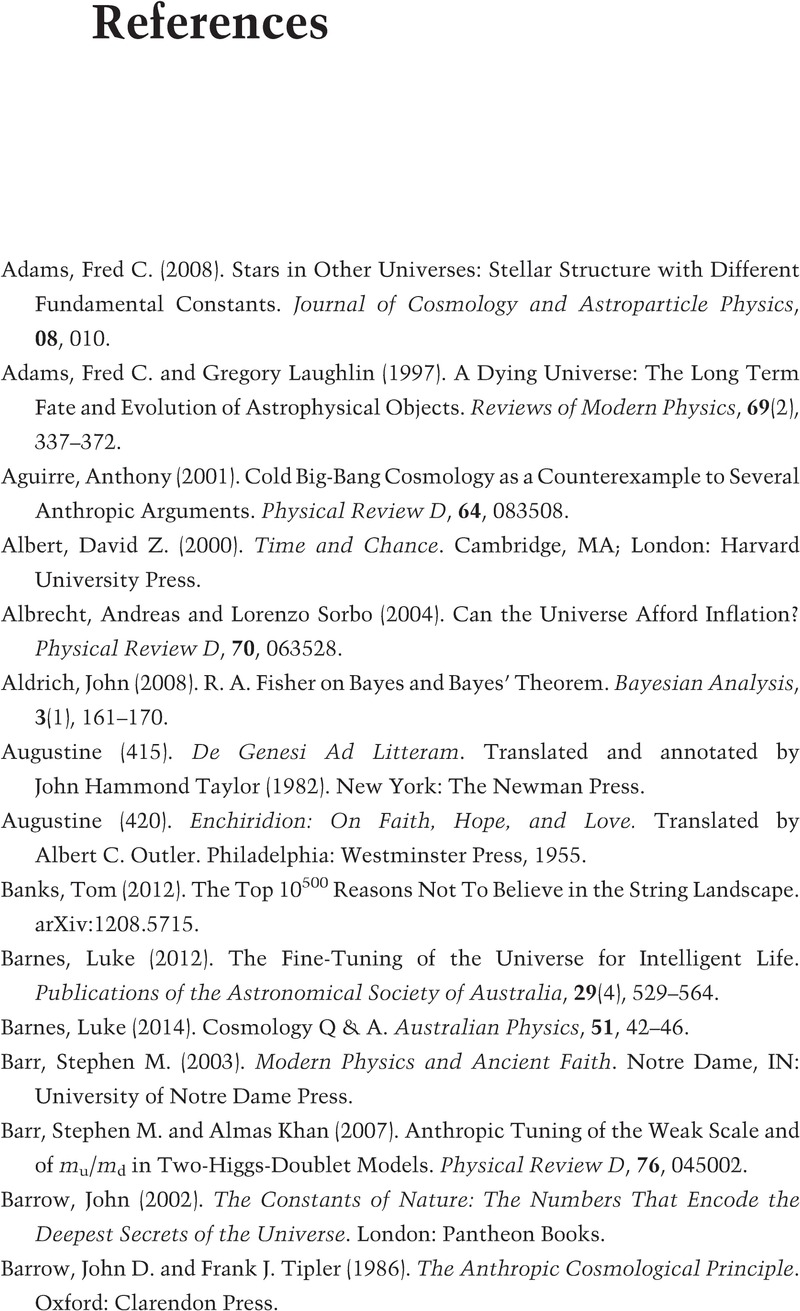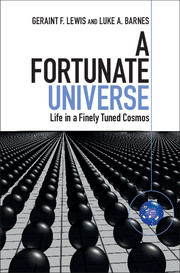Book contents
- A Fortunate Universe
- Reviews
- A Fortunate Universe
- Copyright page
- Dedication
- Contents
- Foreword
- Preface
- Acknowledgements
- 1 A Conversation on Fine-Tuning
- 2 I’m Only Human!
- 3 Can You Feel the Force?
- 4 Energy and Entropy
- 5 The Universe Is Expanding
- 6 All Bets Are Off!
- 7 A Dozen (or So) Reactions to Fine-Tuning
- 8 A Conversation Continued
- Further Reading
- References
- Index
- References
References
Published online by Cambridge University Press: 13 October 2016
- A Fortunate Universe
- Reviews
- A Fortunate Universe
- Copyright page
- Dedication
- Contents
- Foreword
- Preface
- Acknowledgements
- 1 A Conversation on Fine-Tuning
- 2 I’m Only Human!
- 3 Can You Feel the Force?
- 4 Energy and Entropy
- 5 The Universe Is Expanding
- 6 All Bets Are Off!
- 7 A Dozen (or So) Reactions to Fine-Tuning
- 8 A Conversation Continued
- Further Reading
- References
- Index
- References
Summary

- Type
- Chapter
- Information
- A Fortunate UniverseLife in a Finely Tuned Cosmos, pp. 362 - 369Publisher: Cambridge University PressPrint publication year: 2016



